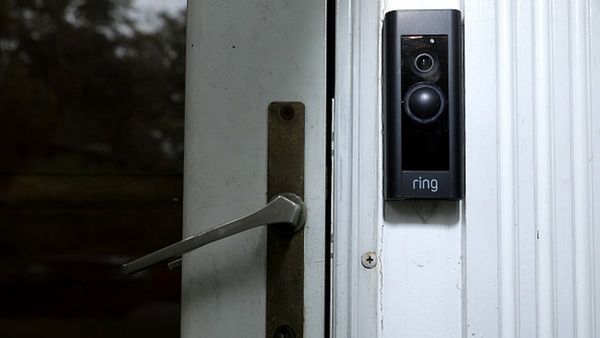Energy bills are expected to rise over £5,300 in April next year according to the most recent predictions. The dire news reported from energy consultancy Cornwall Insight comes before Ofgem confirms its October energy price cap.
Millions will receive new energy bills in the coming weeks when Ofgem announces the October price cap this Friday (August 26), which is forecast to be £3,553 for the average household. The consultancy energy firm has said the forecasts for this period have fallen slightly but gas and electricity bills are expected to increase further for January and April next year.
Household energy bills are now forecast to top £5,300 a year in April, which would mean an annual increase of £4,000 in 12 months. But what is the likely figure many consumers will face and what does the increase in energy price cap mean for gas and electricity bill payers in the long-term?
READ MORE: I asked E.ON for a fixed price energy tariff and was shocked by the response
We have compiled a list of the possible energy price cap predictions below, taken from Cornwall Insight, as well as explaining what the cap is, how it works and what energy deals are currently out there that might be worth considering.
What is the energy price cap?
The energy price cap is the maximum figure that can be charged to customers for typical usage of gas and electricity, and is set by the energy regulator, Ofgem. It essentially limits what you pay for each unit of gas and electricity.
The price cap was introduced in January, 2019 with the aim of preventing householders of being ripped off via certain expensive variable tariffs from being ripped off. It's based on wholesale energy prices and applies to standard and default tariffs.
Ofgem previously updated the energy price cap for household bills every six months but this has now changed to every three months, meaning energy bills will go up or down every three months.
The industry watchdog has said the change would go “some way to provide the stability needed in the energy market”, adding, “It is not in anyone’s interests for more suppliers to fail and exit the market." However, price comparison sites such as Uswitch have said that the change is a "quick fix" to harsh increases.
Because wholesale prices are at unprecedented highs, there is nothing cheaper than price-capped tariffs right now. The price cap is designed to stop energy companies from making excessive profits, ensuring customers pay no more than a fair price for their energy, although some have argued that the new price caps do little to stop this.
Energy price cap in April, 2022
The energy price cap increased by £693 in April for around 22 million people. Those on default tariffs paying by direct debit saw an increase of £693 from £1,277 to £1,971 per year. Prepayment customers saw an increase of £708 from £1,309 to £2,017.
At the time, Ofgem said the increase was driven by a record rise in global gas prices over the previous six months, with wholesale prices quadrupling in the last year. It affected default tariff customers who didn't switch to a fixed deal and those who remained with their new supplier after their previous supplier exited the market.
Jonathan Brearley, chief executive of Ofgem, said in April: "The energy market has faced a huge challenge due to the unprecedented increase in global gas prices, a once in a 30-year event, and Ofgem’s role as energy regulator is to ensure that, under the price cap, energy companies can only charge a fair price based on the true cost of supplying electricity and gas.
“Ofgem is working to stabilise the market and over the longer term to diversify our sources of energy which will help protect customers from similar price shocks in the future.”
READ MORE: I used an electricity calculator to track how much I pay for a cuppa and I'm tempted to cut down
Energy price cap in October, 2022
The energy price cap is expected to be officially announced by Ofgem on Friday, August 26. According to Cornwall Insight the price is predicted to be even higher for consumers.
Their forecast for October this year has fallen very slightly from £3,583 for the average household to £3,553. Cornwall Insight say bill payers are likely to see an increase of 80%, the largest seen yet, with prices jumping up by £1,582 from the current level of £1,971 this winter.
A Cornwall Insight spokesperson said: "While the energy price cap rise in April was already an unprecedent increase in domestic consumer energy bills, our final predictions for October are truly concerning. With the cost-of-living spiralling and households looking at an energy bill rise of over £1,500 equivalent per year, it is difficult to see how many will cope with the coming winter."
Energy price cap in January, 2023

While the predictions for the October cap have remained largely steady over the past two weeks, forecasts for 2023 have risen. Cornwall Insight have said they expect the January price cap for 2023 to rise to £4,649.72 per year for the average household
Their calculations reflect a 15% increase in wholesale prices in the last week. The highly volatile nature of the market means these figures are potentially subject to significant change – both up and down – over the next few months.
Energy price cap in April, July and October, 2023
April's cap is forecast to hit £5,341.08 per year, according to Cornwall Insight, while the price cap is expected to fall later in 2023, it will remain very high - a forecast of £4,767 in July and £4,807 in October.
Other consultancy firms such as Auxilione has said that the price cap could rise above £6,000 a year for the average household by next April, based on Friday's gas price amid continuing volatility in the market.
Previous energy price caps
The level of the cap for the seventh period (1 October 2021 to 31 March 2022) increased by 12% since the last update. From October 1 2021, the level of the cap increased to £1,277 but that figure is a far cry from what the prices are now.
Ofgem ran a price cap from 2017 to the end of 2020 for customers using prepayment meters (the Prepayment Meter Price Cap) and they ran a price cap from 2019 to the end of 2020 for customers on standard variable tariffs (the Default Tariff Cap). They combined these programmes into a single Default Tariff Cap from January 1, 2021.
Support and fixed energy tariffs
Households will get a £400 discount on energy bills starting in October, with more help available for the vulnerable, but this will easily go based on the energy price predications. Energy companies are calling on the government to offer customers more support.
Dr Craig Lowrey, principal consultant at Cornwall Insight, said the forecasts are "truly concerning", and said: "Over the past few weeks, we have seen many public discussions on how consumers will be best supported with their bills. The relative merits of each policy are a matter of debate, however what is certain is the need for a comprehensive energy support plan, one which provides relief for consumers not just for this cap rise or the next, but which looks to deliver enduring support for consumer bills.
"The energy crisis is not something which can be solved with hastily pulled together, short-term policies that yield a percentage decrease here or a few months relief there. Although such policies may help to solve today’s problems, they risk being sticking plasters for a much deeper and longer-term problem.
"The energy market remains an incredibly volatile place, while the observation window for October’s cap has closed, and our predictions for the last quarter of 2022 are final, 2023 is a different story.
"Forecasts can, and will, rise and fall by hundreds of pounds over the coming months, as market conditions continue to change. However, one thing is certain, the cap is not protecting – nor will it protect – consumers from these high prices.
"The next few years will likely be overshadowed by this energy crisis, and there will need to be a serious review of how to deliver energy policy that helps households and businesses alike."
A couple of weeks ago, Martin Lewis, the man behind Money Saving Expert, suggested that some fixed tariffs with selected providers may be able to offer cheaper prices in the long-term than the predicted energy price caps.
At the time, he said: "There are opportunities to take action to help, not because there are great deals out there, but because the latest analysis is the future looks even worse, with the prediction for the next price cap continuing to rise, so it's now far higher than even a couple of months ago. This means some sickeningly costly fixes look like they may now be winners."
The fixed energy deals below, provided from the MSE team, are based on an average of the cost, existing customers may get a higher or lower cost based on a more accurate quote of their current usage.
- Utility Warehouse Green Fixed 34 one-year fix: has a fix at 50% more than the current price cap. Yet you can't just switch to it without signing up to its other utility products. £2,950 a year and £50 dual-fuel exit fees.
-
E.on Next: Next Online v18 one-year fix: has a fix at 73% more than the current price cap. £3,407 a year with no exit fees. E.on says it's available to all existing customers.
READ NEXT:







